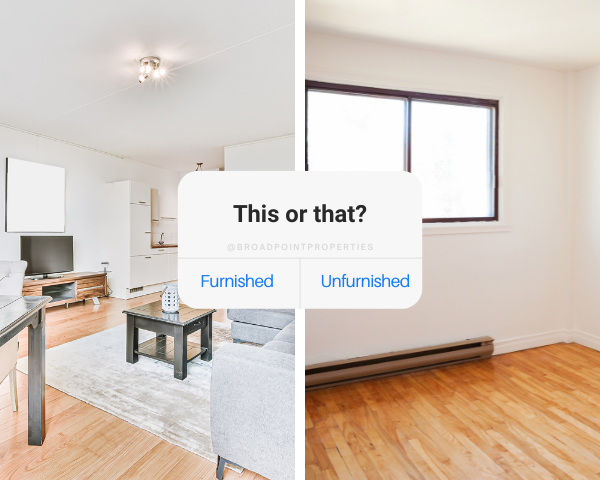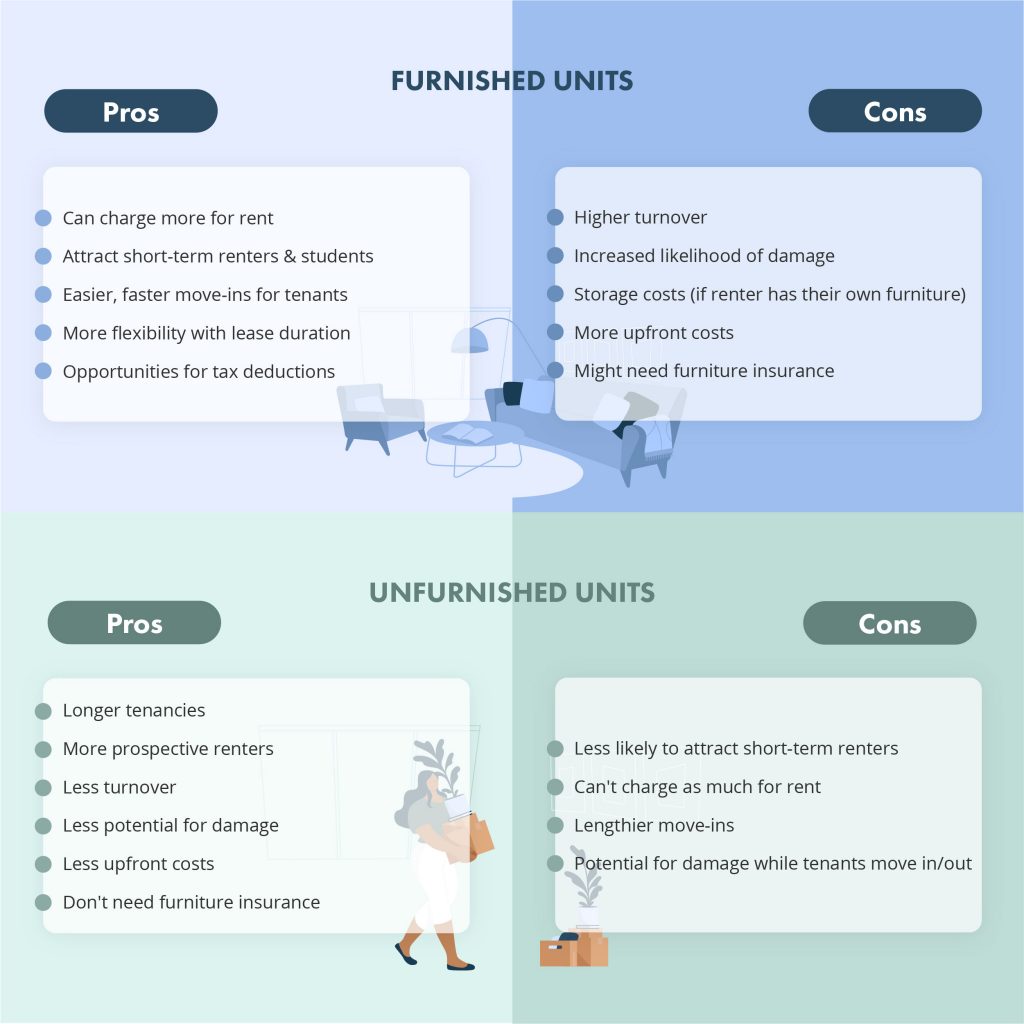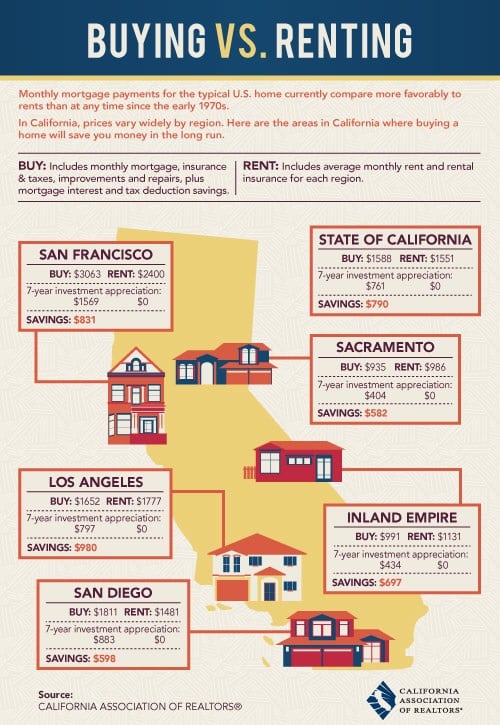
We often get this asked by homeowners in our property management department: Should I offer a furnished or unfurnished rental property? While it is an important choice for property owners, each comes with its own set of advantages and drawbacks. Let’s delve into the pros and cons of each approach. The folks at Liv.rent has created this helpful guide to help you decide.
Pros of a Furnished Rental
- Can charge more for rent: Furnished properties typically command higher rental rates, especially in sought-after areas like San Diego, where demand for turnkey accommodations is high.
- Attract short-term tenants: Furnished rentals appeal to tenants seeking short-term stays like an AirBNB for clients such as travelers, students, and professionals on temporary assignments.
- Easier, faster move-ins for tenants: The convenience of a fully furnished space may encourage tenants to stay longer, reducing turnover and vacancy periods.
- More flexibility with lease duration: Since furnished rentals cater to a variety of tenant types, such as travelers, students, or professionals on short-term assignments, property owners can accommodate their needs by offering leases ranging from a few weeks to several months.
- Opportunities for tax deduction: property owners may be eligible to claim certain expenses related to furnishing the rental unit as tax deductions. These deductions can include the costs associated with purchasing and maintaining furniture, appliances, and other furnishings for the property.
Cons of a Furnished Rental
- Higher turnover: property owners may need to spend more time and resources on marketing the property, screening potential tenants, and managing turnover between leases.
- Increased Wear and Tear: Furnished properties are more susceptible to damage and wear, requiring more frequent maintenance and repairs.
- Storage costs: This is applicable if the tenant happens to have their own furniture.
- More upfront cost: Furnishing a property entails significant upfront costs for furniture, appliances, and decor, which may not be recouped immediately.
- Might need furniture insurance: Because the furniture is at a higher risk of damage or theft compared to an unfurnished property, property owners may need to invest in additional insurance coverage which can provide them with peace of mind and financial protection against unforeseen events.
Pros of an Unfurnished Rental
- Longer tenancies: Tenants are more likely to stay for extended periods, thus providing homeowners a more stable and predictable rental income.
- More prospective renters: Unfurnished rentals cater to a broader tenant demographic, including families, professionals, and long-term residents seeking to settle down.
- Less turnover: Because tenants are inclined to settle in and make it their long-term home, there are reduced turnover rates, allowing property owners to avoid the costs and hassle associated with frequent tenant turnover.
- Lower Maintenance Costs: With fewer furnishings to maintain, property owners may incur lower maintenance and replacement expenses over time.
- Less Upfront Costs: Unfurnished properties require minimal initial investment, as property owners need only provide essential fixtures and appliances.
- Don’t need furniture insurance: No furniture insurance means no cost and time alloted to manage such insurance policies.
Cons of an Unfurnished Rental
- Less likely to attract short-term renters: Some tenants, such as students or short-term renters, may overlook unfurnished properties in favor of turnkey options.
- Lower Rental Income: Unfurnished properties typically command lower rental rates compared to furnished counterparts, particularly in markets like San Diego, where furnished rentals are in demand.
- Lengthier move-ins: Unfurnished properties may experience longer vacancy periods, especially in competitive rental markets, where furnished rentals are prevalent.
- Potential for damage while tenants move in / out: Tenants may need to transport heavy furniture and appliances in an unfurnished unit, then increasing the chances of accidental damage to walls, floors, and other structural elements of your property.
While furnished rentals offer higher income potential and appeal to short-term tenants, they entail greater upfront costs and maintenance responsibilities. On the other hand, unfurnished rentals may attract a broader tenant demographic and require lower initial investment, but they may command lower rental rates and experience longer vacancy periods. Bottomline, property owners should consider their target market, property location, and long-term investment goals when making this crucial decision.
Looking for a property manager in North San Diego County? Look no further. Get professional full-service property management with us.





